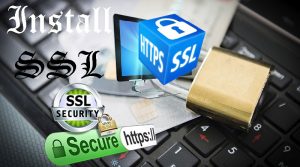To install a Geotrust SSL certificate on Microsoft Exchange 2010 server, follow these steps:
- Obtain the Geotrust Intermediate CA bundle From GeoTrust Links bellow depends on your certificate:
Add the Certificates Snap-in to the Microsoft Management Console (MMC):
- From the Web server, click Start
- type mmc In the Search programs and files field
- click mmc.exe From the Programs list result
- for the administration permission prompt, click Yes
- From the Microsoft Management Console (MMC), click File >> Add/Remove Snap-in
- select Certificates From the list of snap-ins
- Click Add and Select Computer account
- Click Next
- Select Local computer
- Click Finish
- In the Add/Remove Snap-in window, click OK
- Then save these console settings for future use
Now we will install the Geotrust Intermediate CA bundle
- Using the same Console, double-click on Intermediate Certification Authorities from the right pane
- Right click on Certificates from the right pane and select All Tasks >> Import to open the Certificate Import Wizard and Click Next
- Specify the location of the Geotrust intermediate file obtained from Step 1 by clicking Browse and Click Next
- By default, it will place the certificate in the Intermediate Certification Authorities store. Keep this selection and click on the Next button.
- Then Click Finish
- A message will appear confirming the successful import of the certificate. Click OK
Locate and Disable the Geotrust self signed Root CA
Note: For QuickSSL, QuickSSL Premium, GeoTrust True BusinessID, GeoTrust True BusinessID Wildcard, Enterprise SSL, Enterprise SSL Wildcard locate the below root.- Using the same Console, expand the Trusted Root Certification Authorities folder on the left and select the Certificates sub-folder.
- Locate the following certificate:
Issued to: Geotrust Global CA
Issued by: Geotrust Global CA
Valid from: 5/20/2002 to 5/20/2022
Serial number: 02 34 56
- If this certificate is present, it must be disabled. Right click the certificate, select Properties.
- In the Certificate purposes section, select Disable all purposes for this certificate, then click OK.
- Close the MMC console, there is no need to save the console settings
Note : For GeoTrust True BusinessID with EV locate the below root
- Using the same Console, expand the Trusted Root Certification Authorities folder on the left and select the Certificates sub-folder..
- Locate the following certificate:
Issued to: Geotrust Primary Certification Authority
Issued by: Geotrust Primary Certification Authority
Valid from: 11/26/2006 to 7/16/2036
Serial number: 18 ac b5 6a fd 69 b6 15 3a 63 6c af da fa c4 a1
Install the SSL certificate
Geotrust will send the SSL certificate via email. Using a plain text editor such as Notepad, paste the content of the certificate. The text file should look like:—–BEGIN CERTIFICATE—–
[encoded data]
—–END CERTIFICATE—–
Note: Make sure there are 5 dashes to either side of the BEGIN CERTIFICATE and END CERTIFICATE and that no white space, extra line breaks or additional characters have been inadvertently added. Save the file with the extension of .cer.Installing the certificate with the Exchange Management Console:
- Start the Exchange Management Console: Start >> Programs >> Microsoft Exchange 2010 >> Exchange Management Console
- Select “Manage Databases”, and then select “Server configuration”
Select the certificate from the center menu (listed by its Friendly Name), and then select “Complete Pending Request” from the “Actions” menu.
- Browse to the certificate file, then select Open > Complete
Note: Occasionally Exchange 2010 will show an error message stating that “The source data is corrupted or not properly Base64 encoded.” Please ignore that error, even though it occurs the certificate often still installs correctly.
Press the F5 key to refresh the certificate and verify that it now says “False” under “Self Signed”. If it still shows “True”, the wrong certificate may have been selected or the request may have been generated on a different server. To resolve this issue, create a new CSR on this Exchange server and reissue the certificate.
To enable the certificate, go back to the Exchange Management Console and click the link to “Assign Services to Certificate”
- Select the server from the list provided, then click Next
- Select the services for which the certificate must be enabled then click Next > Assign > Finish
- The certificate is now Installed and Enabled for use with Exchange.




